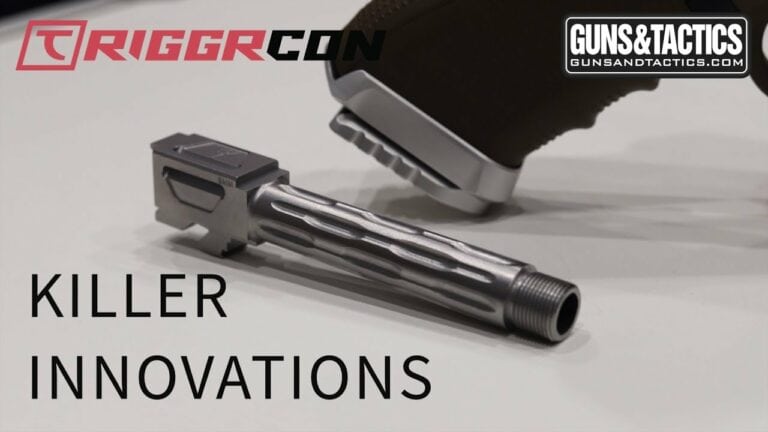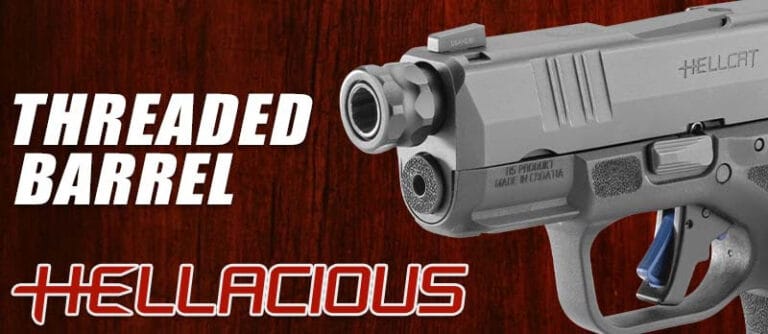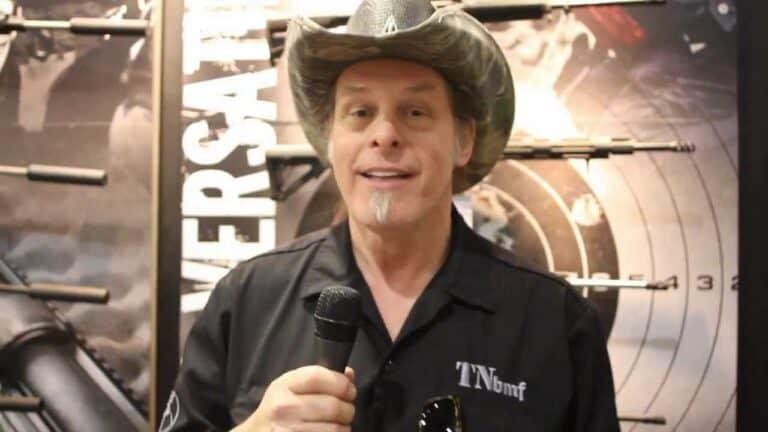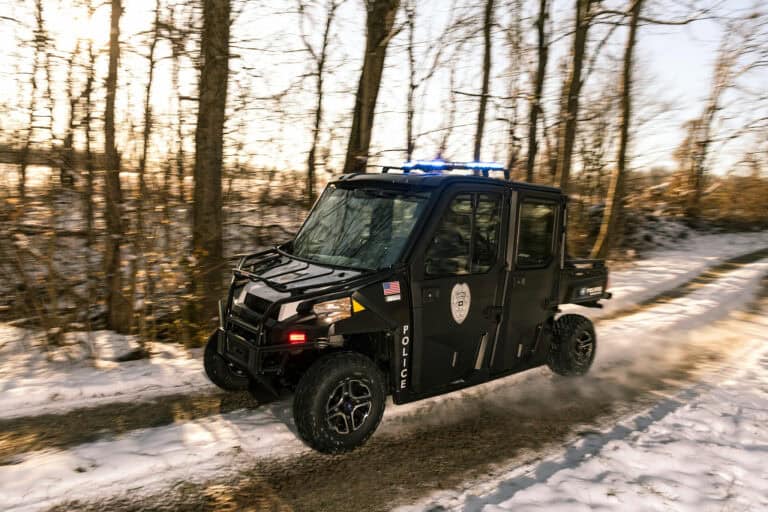SureFire SOCOM-4 Series—A New Fighting Suppressor
Fountain Valley, CA—SureFire, LLC, manufacturer of the world’s finest—and most innovative—illumination tools and…
Fountain Valley, CA—SureFire, LLC, manufacturer of the world’s finest—and most innovative—illumination tools and…
Shinenyx—creators of a cutting-edge fusion of digital night vision and thermal imaging technology—has…
German Precision Optics’ Passion APO is a high-performance compact spotting scope designed and…
The Mod-Navy Qual I’ve been doing this qual (or drill, or whatever the current nom…
• Built for road trips and off-road use• Manual transmission equipped• Wrapped in MultiCam Arctic…
I designed the Button Man to give shooters a low-round-count, low-light-engagement drill that involved both…
Update: Since the publishing of this article the ATF has since concluded that the SIG Brace device
is not designed or intended to fire a weapon from the shoulder. The ATF has further stated that any person who intends to use a handgun stabilizing brace as a shoulder stock on a pistol (having a rifled barrel under 16 inches in length or a smooth bore firearm with a barrel under 18 inches in length) must first file an ATF Form 1 and pay the applicable tax because the resulting firearm will be subject to all provisions of the NFA.
Click here to read the letter. (posted 16JAN2015)
If you were to go back a few years and bring up the AR pistol debate, you would probably have been met with a wide variety of opinions. Some would say they are unreliable, not useful, or just fun range toys. Others might say, they are a valid alternative to an SBR for folks living in non-freedom loving states. There are also many federal and state laws that can confuse the issues of ownership of AR pistols. Many authors have written about how AR pistols fit into the firearms landscape and the laws pertaining to them. This article will be about how the AR pistol has evolved and will highlight a recent pistol build. The AR pistol has come a long way the past couple of years and the sale and building of AR type pistols has skyrocketed thanks to a couple of key accessories. Many of you already know that I’m referring to the SIG SB15 pistol stabilizing brace and Law Tactical AR Folding Stock Adaptor.
For those not familiar with the aforementioned products, the SIG SB15 pistol stabilizing brace was designed as an aid to help disabled shooters stabilize an AR pistol. Let’s face it, one of the past and valid criticisms of AR pistols was the fact they were hard to handle and not terribly accurate thanks to their short sight radius, weight and caliber. The brace was designed to be attached to the shooters arm, providing a more secure way to stabilize the pistol. It is basically a cuff that slips over the extension tube and is strapped to the shooters arm. As the SB15 is secured to the extension tube via friction it can have a tendency to spin. Many companies are now coming up with new adaptors to help keep them in place as well as longer extension tubes that increase the length of the brace to fit larger shooters. You may see many shooters, including myself, shouldering the SB15 which for some may raise red flags. This is perfectly legal and the ATF has stated the SB15 does not alter the classification of the firearm nor is it subject to NFA control. [Memo from ATF…]

The other game changer is the Law Tactical AR Folding Stock Adaptor. At the time of this writing the Law Tactical adaptor is the first and only stock adapter designed to work with the AR platform series of rifles. The adapter is in its 3rd generation of manufacture and can be used with a standard bold carrier group in full auto, semi auto and with both 5.56 and .308 caliber rifles regardless if they are direct impingement or piston operated. This would include .300 Blackout, as the cartridge uses the same 5.56 BCG. It will also work on forged or billet receivers and milspec or commercial extension tubes. As many of you readers know, the AR series of rifles needs an extension tube which houses a buffer and spring in order to operate. There are some rifles out there that are an exception to the rule, but for the most part this is standard on an AR. The folding stock adapter installs on the rear of the lower receiver and then the extension tube is attached to the adapter. The adapter uses a few proprietary parts such as the bolt carrier group extension, buffer retaining pin and spring. The Gen3 system itself is made from 4140 tool steel and has improved design features over the older generations. This includes a set screw to secure the adaptor from loosening from the receiver, a durable Cerekote finish, lowered hinge to save your fingers during charging and a tool less bolt carrier extension. It should be noted there is a built in gate that will prevent injury should the firearm be fired with the stock in the folded position.
With these accessories in hand I set out to build an AR Pistol. I have owned many AR pistols in the past, however I never held on to them very long as they weren’t very practical for me. Another issue was I couldn’t convert them to an SBR because my state of residence didn’t allow SBRs at the time. Eventually my interests would change and I would move on to something else. Well, the SIG SB15 and the Law Tactical Folder changed that for me. In my quest to build my first AR pistol in 5 years or so, I started with a virgin billet Sparten-15 Joe Bob Outfitters stripped lower receiver I had laying around. To that I attached the Law Tactical Folder and the SIG SB15 brace utilizing both the Fortis QD end plate and KAK Super SIG SB15 pistol buffer tube. The KAK tube is awesome because it has a built in stop that prevents the arm brace from sliding all the way forward on the tube making for a longer arm brace which is perfect for a guy with my long arms. The Law Tactical adaptor also added some length to really make the SB15 user friendly for me.

For the fire control parts, I used a drop in trigger pack from CMC Triggers. The pack I chose was their new flat faced, 2 stage trigger with a 2 & 2 lb trigger pull. This is one extremely fast trigger that also excels at precision work. I have used most of the CMC line of trigger packs and I can say the 2/2 trigger is my favorite this far. Its 1st stage take up is so minimal and the 2nd stage break is so crisp. For the take down pins I chose the Battle Arms Development BAD-EPS-TI set. They are made of Titanium for reduced weight, are longer for ease of pushing the pins out and have a concave tip to prevent scratching the receiver with a push tool or bullet tip. They also add a little bling to your blaster. For the pistol grip I chose the new XTech Tactical ATG strictly out of curiosity. The ATG allows the grip to be positioned at 3 different angles depending on your shooting style and firearm set up. I chose the most vertical position, as that is more comfortable for me when shooting a more compact AR type firearm. I found the grip to be built tough, however it was a little too slender and slick for my liking. I ended up doing a very aggressive stipple job on the grip and then I contacted the manufacture. They confirmed the grip is based on the milspec A2 grip, which is why it is a bit more slender. They are will be coming out with other “beefier” versions in the future. For my testing purposes it will do just fine.
Choosing the upper receiver series of parts took a little time to choose. I have owned a lot of 5.56 rifles and pistols in the past and was looking to go a different route. While more expensive than the smaller 5.56 round, the .300 Blackout cartridge is extremely fun to shoot and even more fun to shoot suppressed. With that in mind I started looking into manufactures that made complete .300 Blackout uppers. I ended up selecting a brand new Adams Arms .300 Blackout complete upper receiver.
Adams Arms (AA) is known for making piston conversion kits as well as AR 15 piston upper receivers and complete firearms. I have probably owned 6 or 7 Adams Arms uppers, pistols and/or rifles in the past. Let’s just say I went through a piston gun phase a while back… Anyway, I have never had any issue with any of my past AA firearms and they had just announced their new .300 Blackout offering so I figured it would be a good time to give one a shot. Pun intended.

I selected their new 12.5 XLP EVO upper receiver chambered in .300 Blackout. The upper is made from forged 7075-T6 type III hard-coat anodized finish. The top rail has the now standard 1913 Picatinny rail for mounting optics. It is also has laser engraved top markings. The upper utilizes a 12.5-inch medium contour 4150 CM Melonited Voodoo Innovations (VDI) barrel with a 1:9.5 twist. In past Adams Arms guns I have owned, the gas block would necessitate that the rail or hand guard be cut out to accommodate it. Not the case with the new XLP low profile gas block. The XLP has 5 settings that can be user adjusted that will give 100, 75, 50, 25 percent gas depending on the setting. It can also be turned off. The XLP kit that came with this barrel is for a pistol-length system. More on that later… The recoil of the .300 Blackout cartridge is tamed by the VDI .30 cal Jet Comp muzzle device. The whole barrel assembly is housed inside a Samson free float, light weight modular rail system. This rail does not have the typical cut out found in the older EVO offerings from Adams Arms thanks to the XLP gas block. This gas block can also be purchased separately as part of a conversion kit. I should mention that even though the XLP block is low profile there is still the drive rod to contend with. Not all rails or hand guards will have enough room inside to accommodate the drive rod or block so verify the clearances before you buy.
For optics, I was able to get a Trijicon VCOG on loan. The VCOG is a beast of an optic. It features 1-6 variable zoom with a simple first focal plan BDC recital. The eye relieve is generous and the glass is clear. It is also built like a tank and can take some serious abuse. For my purposes, it was overkill for the distances I would be shooting at, but my aging eyes really appreciate the 6x magnification and I wanted to test the accuracy of the pistol.
Range day was a typical Pacific Northwest kind of day. Cool with a little drizzle and the occasional sunburst. As I intended this to be a close up home defense type of pistol, I set the targets at 50 yards. I rested the pistol on my Tactical Tailor Phantom Trekker SBR bag for support. Once settled in, I intended to get shots on paper then fine tune the adjustments. I was using 125 grain reloads for the test provided by Adams Arms. The first round hit paper high and right to my point of aim however the round didn’t eject. Odd. I attempted a few more rounds with the exact same result. I figured it must be the under gassed and was having a hard time cycling with the additional weight of the Law Tactical bolt carrier extension. Before I changed the gas setting I tried to cycle the firearm with two different magazines with the same single shot results. Next I swapped out the upper to a different pistol lower that didn’t utilize the Law Tactical folder to see if reducing the weight of the BCG would help. No dice. Time to change the gas setting. Remember when I mentioned the upper uses a pistol-length gas system? Well the 12 inch long Samson hand guard made it impossible to access the gas block regulator from the front and there isn’t any side access. Bummer.

After clearing the weapon, I removed the upper receiver from the lower receiver. Removed the charging handle and BCG and used an allen wrench to remove the machine screws holding the rail to the barrel nut. Note, if you remove the Samson rail, you will notice there are two halves of a coupler that clip to the milspec barrel nut. Remember which way these go on. If you forget, you will have a hard time reinstalling the rail. Ask me how I know this…

Once the rail was removed I was able to access the regulator. The regulator/gas plug is pretty basic. There is a lever in the front and the top is marked with a + sign and a – sign. + for more gas, – for less. Simple. There is also a plunger on the front of the gas plug that when depressed allows the gas plug to be removed for cleaning. When I tried to move the adjustor it wouldn’t budge. To make a long story short, I ended up taking it apart by removing the detent set screw and detent. Then I was able to rotate the plunger after some effort. After reinstalling the detent and set screw I left the rail off and went through every gas setting and attempted to fire multiple rounds. As would be expected, the lower gas settings resulted in a single round fired and no ejection. Only after I increased the gas to 100% did I get multiple rounds to fire and eject, but it wasn’t consistent. I was losing daylight and the mercury was dropping rapidly so I got my accuracy testing done. I took turns with Jody Lewis of Crossfire Photography putting rounds though paper at 50 yards from the bench. The five shot strings of both shooters averaged ½ inch at 50 using reloaded ammunition. Many of the rounds were on top of each other with the occasional flyer. It was then time to call it a day. I left the range somewhat discouraged but optimistic I could diagnose the issue.
Back in my workshop, I took apart the entire pistol and removed the gas plug. I found that the internals were extremely dry and had some carbon build up on it. I removed the carbon and treated all the parts with Froglube, which really helped a lot. I documented my experience and contacted Adams Arms. They asked a lot of good questions to help me trouble shoot the problem including, "Does your upper have a low mass bolt carrier group?" Uhmmm… nope. "Oh, it should. We will send one right out."
Fast forward the time it takes UPS to ship a package and I had the low mass BCG in my hands. Adams Arms was also awesome enough to send 200 rounds of SteadFast .300 Blackout 125 grain Hollow Point Match Kings. They were concerned the reloads I had been using might be under-powered. That was a much appreciated gesture.

The next range time would be a few weeks later up in the mountains in the middle of a snowstorm. Temps were in the mid 20s and to say my fingers were numb was an understatement. My main goal was to see if the pistol would reliably function with the new BCG and ammo. First, I just swapped out the BCG with the gas on the 75% setting. The reloaded ammunition still resulted in single shots. Next I swapped out the reloads for the factory ammo and crossed my fingers. The gas setting remained unchanged. The Adams Arms upper ran like a champ. We ran 3 and 5 round bursts and full mag dumps without any malfunctions or stoppages. I was very happy to get the kinks worked out. I must say the Jet Comp did a great job of keeping the pistol level and controllable even when delivering rapid strings of fire.
Over all I am happy with the new pistol. I am still somewhat new to the .300 Blackout cartridge and am learning more about it as I go. The construction of the build is solid and the Sig Arm Brace and Law Tactical adapter have really changed my opinion on the AR pistol. I think the .300 Blackout round in an AR pistol set up like mine will make a very good HD weapon, truck gun or survival gun. It is very compact and can be stored in all kinds of places including a backpack. I also really appreciate Adams Arms customer service. They helped me solve the problem quickly to get me up and running. My one recommendation to Adams Arms is to use a rail that gives access to the gas block adjustment without removing the rail. They are very aware of this issue and are working to develop a solution. I was hoping my brand new quick change Fortis Manufacturing 12 inch SWITCH rail would work. That would make it much easier to service and change the gas block settings. Without removing the piston conversion kit or the milspec barrel nut from the upper I attempted to slide the SWITCH rail on. It went over the drive rod but it didn’t appear to sit fully level over the gas block. Unfortunately due to the tapered angle of the gas block I was unable to get it to work with the Fortis SWITCH. If I have more time I may completely disassemble the conversion kit and use the Fortis barrel nut to see if I can get it to work, however I am still doubtful. If Adams Arms can update or modify the current rail to allow the user to adjust the gas, it would be a home run. Regardless of the little hick ups during the testing process, I look forward to running this pistol hard in the future. Next step is to suppress it! Subsonic .300 Blackout suppressed is a real treat and I can’t wait to try it on this build! My .300 Blackout AR pistol is here to stay!











* The views and opinions expressed on this web site are solely those of the original authors and contributors. These views and opinions do not necessarily represent those of Guns & Tactics Magazine,
the administrative staff, and/or any/all contributors to this site.
Steve is a former United States Naval Special Warfare Combat Crewman (SWCC), NRA Life Member and has been a firearms enthusiast for over 30 years. Steve is a writer and photographer focusing on the testing and evaluation of new products and has a natural gift for breaking things. He resides in the Pacific Northwest with his wife and children enjoying the shooting sports and the great outdoors.

The most tactical paint can on the planet has dropped at the doorstep of Guns & Tactics. The guys from Apex Tactical Specialties delivered us a surprise and…
The proper storage of firearms should never be taken lightly. Regardless, if you are protecting others from hurting themselves or others (children), from theft, or from fire careful…

Apex Tactical has expanded its aftermarket upgrade options for the extremely popular Springfield Armory Hellcat with a threaded barrel.
[dcs_img_center desc=”Photo by Jody Lewis for Guns & Tactics Magazine” framed=”black” w=”600″ h=”399″] http://gunsandtactics.wpengine.com/wp-content/uploads/2014/04/catalyst-1-600-399.jpg [/dcs_img_center] [dcs_post_top] [dcs_fancy_header bgcolor=”#ffffff” color=”#000000″ fweight=”bold”]Steve Coulston takes a look at the Extended Magazine…

Ted Nugent speaks his message at SHOT Show 2012 with Guns & Tactics Magazine.

Polaris Government and Defense has expanded its current offering of the popular off-road and over-the-curb RANGER fire and rescue vehicles to include the street-legal GEM and indoor-use Taylor-Dunn electric…
© 2025 UN12 Magazine
© 2025 UN12 Magazine
Wait! Don’t forget to